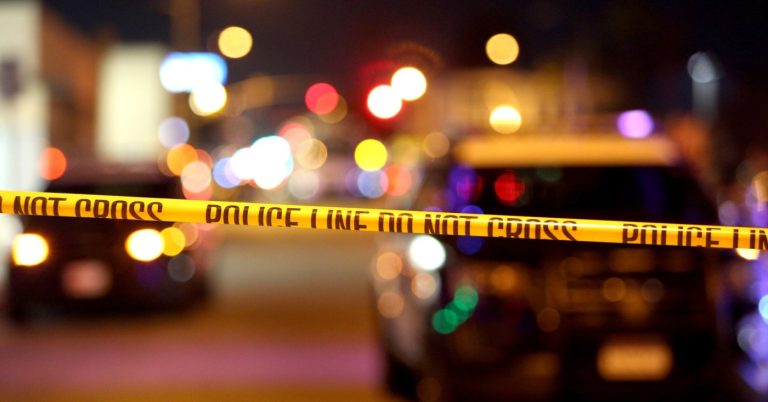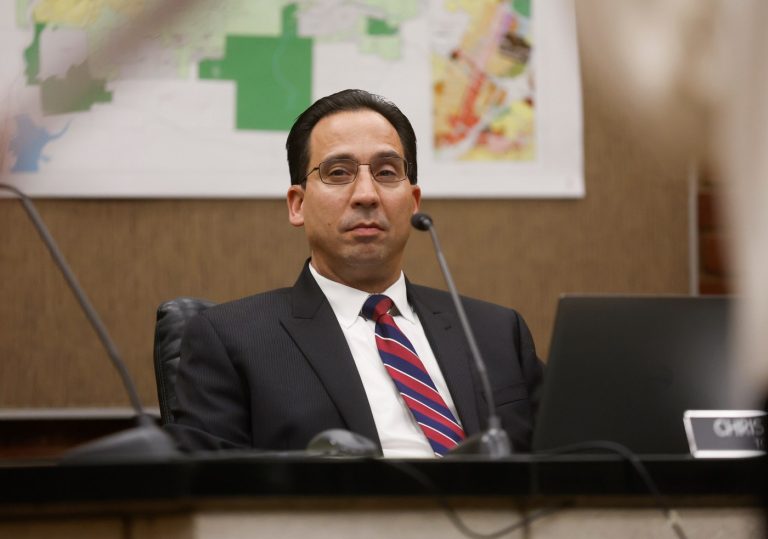MARTINEZ — Inspired by a colleague’s idea — an ultimately unsuccessful concept of using sound or puffs of air to control fire – Dr. Waleed S. Haddad considered another tactic: using wind and water to control the temperature and intensity of a blaze.
Over nights in his kitchen, the physicist came to design and invent what he calls a “mobile burn chamber,” which starts a fire, controls the flames and extinguishes them, all in one pass. Now, wildland and fire experts hope the device may play a role in changing the landscape of wildfire prevention.
The machine, called the RX2, was on display Tuesday morning, burning low grass to create a fire buffer around a PG&E substation near Franklin Canyon Road in Martinez.
“I can’t say I ever imagined something coming along like this,” said Cal Fire Deputy Chief John McCarthy, a firefighter and forester since 1994.
McCarthy was among firefighters, utility officials and others who viewed the tank-like machine, which can start — and extinguish — fire and mitigate smoke under a prescribed setting in almost all conditions. It’s also known as a BurnBot, after the company that developed it.
For sports fans, it’s like a Zamboni, sort of: Instead of cleaning and smoothing ice, the machine’s purpose is to take earth that carries a top layer of wildfire fuel and leave it in gently charred condition, thus preventing out-of-control blazes in the future.
“This is all about a vision of, hopefully you reach a day where we do have a handle on wildfires, or at least the prevention of them,” said Anukool Lakhina, who along with Haddad co-founded BurnBot. “Think about doing prescribed burns. Ordinarily, you have to make sure that conditions are right, staffing is right. You can’t do a prescribed burn near a transmission line. You can’t do one near the side of a road.”
The possible success of Haddad’s invention — about three years in development, he said — could change that.
The machine’s design allows the heat and intensity of the flames sparked to remain under control, burning the dry vegetation not only at ground level but extending below it, Haddad said. Then, rollers that are equipped on the machine pass over the flames, as small screw-like holes spray jets of water. Fans from within the BurnBot flow the entire time, dispersing heat to maintain a steady temperature.
Fire officials said it appears to be a far more appealing option than simply bulldozing perimeter lines in an attempt to bury possible wildfire fuel before flames arrive.
“There is a lot that goes into bulldozing,” McCarthy said. “You might come across wire lines, water lines, things of that nature. Here, you can create a perimeter without causing a lot of extra disruption.”
Haddad said the high temperature in the machine’s chamber and the long-torch flames partially burn the particulate matter in smoke, and the fans draw the remaining smoke away.
The machine, though thorough, won’t win any speed competitions. Haddad said it is generally designed to go about a mile per hour, maybe a few tenths more. Lakhina said it’s designed “to average about an acre per hour.” It’s operated by a person standing nearby with an iPad, not a driver.
PG&E spokesperson Paul Doherty said the utility is testing the Burnbot as an alternative option for managing grassland and other vegetation fuels. Eventually, it could complement bulldozers in creating fuel break lines and be used to manage weeds that are resistant to herbicides.
Brandon Dunham, a firefighter for 11 years who is now the business development director for the BurnBot, said he foresees a day when fire departments throughout the state may be working to obtain the machine.
“It’s hard to quantify the impact that it could have,” he said. “But as a boots-on-the-ground firefighter for a decade-plus, I can tell you it’s going change what we can do in terms of catastrophic fire prevention in ways we don’t even know yet. This changes the game.”












